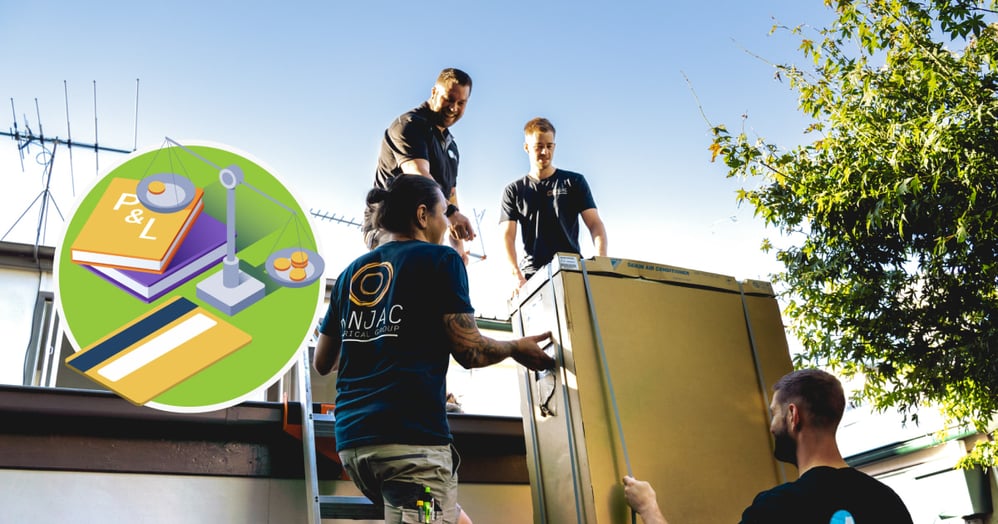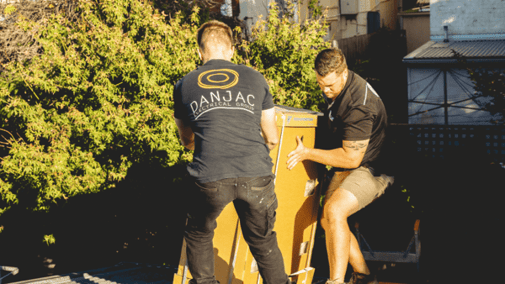Flat Rate vs Hourly — What’s Best for Trade Businesses?
by Team Tradify, May 8, 2023

Table of Contents
When it comes to your trade, you’ve probably already got things down pat. You know the job inside and out, you’re in high demand, and the jobs are rolling in. But knowing how to charge for your services can be a trickier task.
If you’ve just started your trade business, you’ll know pricing is a key element of your business plan. Experienced tradespeople know that if you quote too much, you might miss out on future work. If you charge too little, you’ll lose profit. The rate dilemma can also make sales forecasting or a break-even analysis slightly problematic.
It’s a fine line and there’s certainly no one-size-fits-all for every tradesperson. Regardless, we’ve weighed up the pros and cons of each option, so you can be sure you’re charging sensibly for your services.
- 1. What is an hourly rate?
- 2. Benefits of charging an hourly rate
- 3. Downsides of charging an hourly rate
- 4. What is a flat rate?
- 5. Benefits of charging a flat rate
- 6. Downsides of charging a flat rate
- 7. Hybrid rate
- 8. A note on charge-up rates
- 9. So what should you be paid for your trade?
1. What is an hourly rate?
This is probably the most favoured option for tradespeople – you quote a price by the hour, and the final invoice is calculated when the job is complete. Tradify’s charge-out rate calculator can help you make sure you’re charging the right hourly rate.
2. Benefits of charging an hourly rate
Every minute counts
Trade jobs are often unpredictable – what you thought was going to be a simple one-hour job could easily turn into ten when you get started and realise there are further problems. But if you’ve quoted an hourly rate – no problem, you’ll be paid for all your time spent on the job.
More room for change
There’s a lot more flexibility or scope of work when you’re being paid by the hour – not having to knuckle down on set costs. Plus, if you get halfway through a job and realise it needs to change direction – your pocket won’t suffer because of it.
Freedom to take on more jobs
With an hourly rate, depending on how you organise your day, you might have time to fit in multiple small jobs. More jobs can mean a boost in income.
Keep your freedom
With an hourly rate, you can come and go more easily – freeing up time to take a call about a quote or visit another job site.
3. Downsides of charging an hourly rate
Less appeal to clients
Inconclusive prices could very well lead to less interest from customers, which could mean you struggle to secure work. It’s reassuring for a client to know exactly how much something is going to cost – down to the final cent.
4. What is a flat rate?
This is a clean and easy way of quoting for your services – a single fee that covers a particular job — regardless of the time it takes to complete.

5. Benefits of charging a flat rate
Predictability
When you charge a flat rate, you know exactly how much income to expect when the job’s done. If you quote every job at a flat rate, you can accurately estimate your profit.
Secure more work
This option is appealing to customers, with no surprises for them in the final invoice. For this reason, you might secure more work if you offer a flat rate.
Larger profit
If you’re charging a set $100 fee for a job, it could take you 30 minutes or four hours. Knowing you won’t be paid extra for any overtime, you or your staff might be more motivated to get the job done faster – meaning a larger profit and free time to take on more work.
Upfront payments
If customers know how much the job is going to cost, they may choose to pre-pay for your services. This will save you a huge amount of time and stress chasing wayward payments.

6. Downsides of charging a flat rate
Losing profit
If you accidentally undercharge, there’s no going back once the quote has been sent. And if a job takes you much longer than you anticipated, you could lose a tonne of potential earnings.
No wriggle room
Just as a job could take you longer than you estimated, it could also end up being much more complicated than you expected. If problems arise after clients have accepted a quote, they’re unlikely to agree to change it – meaning you’ll be faced with hours of extra work and no pay.
Pressure
With a set job rate, you might feel pressured to stay on site all day until the job’s completed.
7. Hybrid rate
A hybrid rate is essentially a blend of hourly and fixed rates, adjusted to suit your business and circumstances. For example, you might charge a fixed rate for installing a new boiler – it’s a job you’ve done a hundred times before and you know how long it should take you. But if the same client also needs a leaky roof repaired, that could take hours or even days – so you may price it by the hour.
Ample flexibility
A hybrid option offers ample flexibility and is a great solution to all the above issues. Having your entire business on the same pricing structure doesn’t make a lot of sense when the scope of your work can vary so much. A hybrid approach allows you to price jobs according to whether they’re more suited to fixed, hourly, or a mix of both rates.
A flat rate to start
Some tradespeople also use the hybrid method to quote a flat rate for a certain amount of hours – and anything above that goes hourly. If a flat rate of $200 was quoted to install a new doorframe, the timeframe given might be two hours. If the client requests further work on the doorframe or for unforeseen reasons it ends up taking longer, the rate will go to hourly after the two hours is up.

8. A note on charge-up rates
While it’s usually best to have a structured pricing system that you can quote to customers, sometimes its best to act fast in the interest of winning work. If you get an enquiry for some same-day service, then go ahead and take it for an agreed upon hourly rate — it’s more money in your pocket at the end of the day and you can even charge a little bit more than you usually would. Just be sure not to make a habit of pricing this way, this can lead to inconsistent pricing, and a less structured system that can make the end of financial year tougher than it needs to be.
9. So what should you be paid for your trade?
If you can accurately estimate the hours needed for a job, then a fixed rate may work for you – you’ll keep your client happy, you won’t miss out on cash and you’ll probably secure more work thanks to your reputation. But for unpredictable, complex or more labour-intensive jobs, an hourly rate will have your back. You’ll be paid for all the time you work and you won’t risk one hour of paid work turning into ten unpaid.
Many tradespeople have adopted the hybrid approach and offer a mix of both fixed and hourly rates. That way, they quote a fixed rate when they can confidently predict the duration of simpler jobs, and an hourly rate is agreed upon for the more complex jobs. It’s the best of both worlds – and it keeps everyone happy.
Learn about the highest-paid trades.
Set your staff up with Tradify and keep everything running smoothly while you’re away. Sign up for a free 14-day trial, or jump into one of our weekly live walkthroughs.
Related articles

How To Keep Your Trade Business Running When You’re on Holiday

Digital Marketing for Small Businesses + Free Marketing Plan

5 Great Gift Ideas For Tradies
Give Tradify a go for free!
Save 10+ hours/week on business admin with the highest-rated job management software for tradespeople.
With free one-on-one training and phone support, it's never been easier to get started.



